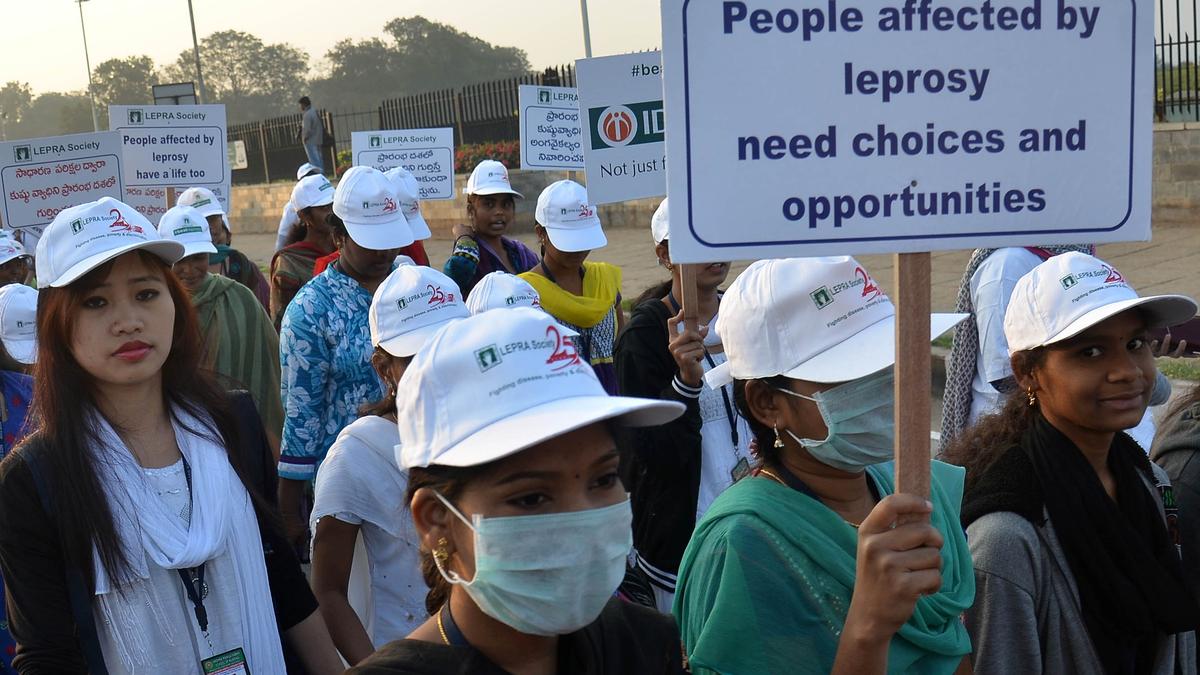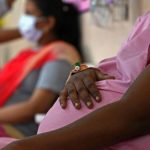Govt to employ targeted containment to stop transmission of leprosy Premium


Govt to employ targeted containment to stop transmission of leprosy Premium
The Union Health Ministry is looking at a more targeted approach to containing leprosy in India after having achieved the status of elimination of leprosy as a public health problem as per the World Health Organization’s (WHO) criteria of less than 1 case per 10,000 population at the national level in 2005.
To contain the chronic infections caused by Mycobacterium leprae, the Central Government approved a new treatment regimen for leprosy, aiming to stop its transmission at the subnational level by 2027. It introduced a three-drug regimen for Pauci-Bacillary (PB) cases in place of a two-drug regimen for six months.
Aradhana Patnaik, additional secretary and mission director, National Health Mission, said: “The sustained work by the Central Government has ensured that leprosy is now no longer a public health problem. We are currently looking at a targeted approach to tackle the disease in 5 states and 124 districts in India.”
The five states in India with the highest prevalence of leprosy include Bihar, Chhattisgarh, Jharkhand, Maharashtra, and Odisha.
The Union Health Ministry launched the National Strategic Plan (NSP) and Roadmap for Leprosy (2023-27) on 30th January 2023, to achieve zero transmission of leprosy by 2027, i.e., three years ahead of the Sustainable Development Goal (SDG). The NSP and roadmap contain implementation strategies, year-wise targets, public health approaches, and overall technical guidance for the programme. The strategy and roadmap focuses on awareness for zero stigma and discrimination, promotion of early case detection, prevention of disease transmission by prophylaxis (leprosy post exposure prophylaxis), and roll out of web-based information portal (Nikusth 2.0) for reporting of leprosy cases.
“After achieving elimination status at the national level, the National Leprosy Eradication Programme (NLEP) has taken a number of initiatives to encourage early case detection of patients to prevent Grade 2 Disabilities, and to ensure free-of-cost treatment of leprosy patients. There are few districts within states/UTs, where leprosy is endemic. With various interventions introduced under NLEP in the last few years, the number of new leprosy cases detected has come down to 75,394 in 2021-22 from 125,785 in 2014-15, accounting for 53.6% of global new leprosy cases,” said a senior Health Ministry official.
According to the WHO, leprosy predominantly affects the skin and peripheral nerves. It is diagnosed by finding at least one of the following cardinal signs: definite loss of sensation in a pale or reddish skin patch, a thickened or enlarged peripheral nerve, with loss of sensation and/or weakness of the muscles supplied by that nerve, and/or microscopic detection of bacilli in a slit-skin smear.
Cases of leprosy are classified into two types for treatment purposes: paucibacillary (PB) cases and multibacillary (MB) cases. If left untreated, the disease may cause progressive and permanent disabilities. The bacteria are transmitted via droplets from the nose and mouth during close and frequent contact with untreated cases. Leprosy is curable with multidrug therapy (MDT) and is reported from all the six WHO regions, the majority of annual new case detections are from the South-East Asia Region.
The WHO supports India’s National Leprosy Eradication Programme (NLEP) to eradicate leprosy as a public health issue. The WHO also provides free multi-drug therapy (MDT) to treat leprosy in India. Leprosy is a neglected tropical disease (NTD) that still occurs in more than 120 countries, with around 200,000 new cases reported every year. Elimination of leprosy as a public health problem (defined as a prevalence of less than 1 per 10,000 population as per the World Health Assembly resolution 44.9) was achieved globally in the year 2000 and in most countries by the year 2010.
The reduction in the number of new cases has been gradual. As per data of 2023, Brazil, India, and Indonesia continue to report more than 10,000 new cases, while 12 other countries (Bangladesh, Democratic Republic of the Congo, Ethiopia, Madagascar, Mozambique, Myanmar, Nepal, Nigeria, Philippines, Somalia, Sri Lanka, and the United Republic of Tanzania) each reported 1000–10,000 new cases.
(bindu.p@thehindu.co.in)










